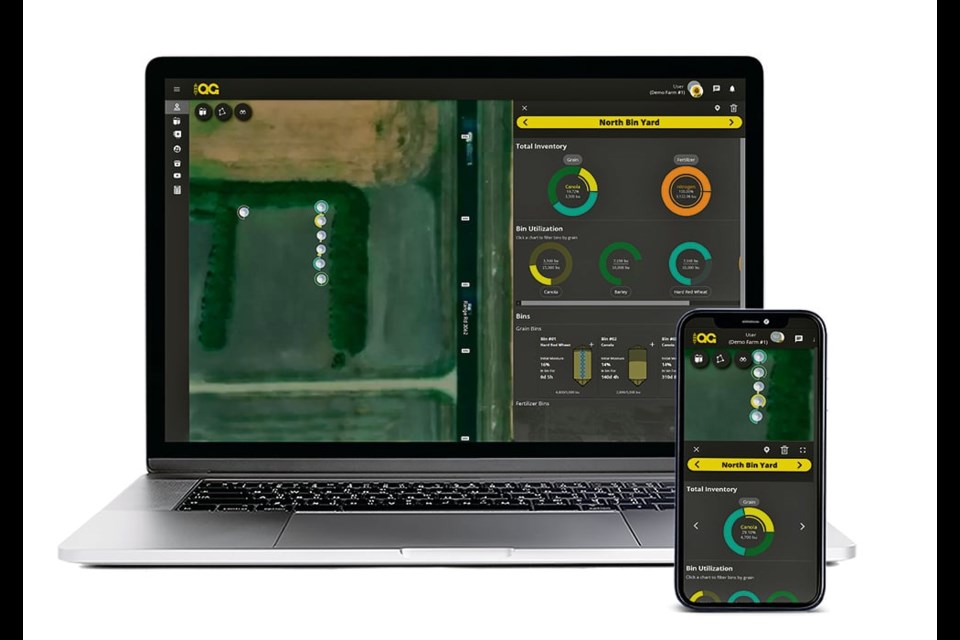WESTERN PRODUCER — A free online dashboard can help farmers monitor and manage stored grain.
Saskatoon-based Adaptive Agriculture built a bin inventory system, available through its website, that connects to bin sensors and graphs their readings.
Specific sensors can be selected and the portal will show activity over a selected time.
Dustin Maki, a product manager at Adaptive Agriculture, said the portal uses Google Maps so users can zoom into their farmyard to name their bins. They can then focus on any bin.
When filling a bin, producers can indicate the field where the grain was grown, which can help them offer traceability to customers.
Maki said once the portal is connected to plenum sensors that indicate the moisture, temperature and head space above the grain, it will also provide modeling.
“We can actually show if you’re drying or hydrating at any point in time, and where the moisture is trending towards and actually give you the litres of water that is coming out,” Maki said.
“We’ve got temperature, humidity and pressure of the plenum. So, this kind of goes together to make a CFM (cubic feet of air per minute) per bushel based on your fan chart. From there, every hour we estimate a time to completion.”
The system can also be connected to Adaptive Agriculture’s control devices Bindapt+ and Bindapt+ Pro, which is a thermostat controller for two heaters or for one heater and aeration fan.
Once the grain and moisture target are added to the portal, it will connect to the control devices to manage the process and tell users what’s going on in their bins.
The system can provide alerts through email and text message, including notice of high humidity or a drop in aeration fan pressure, which can indicate power loss.
Maki said once the system is given the bin, inventory and initial moisture content, it can automatically achieve the target moisture content for the grain.
“When you build a digital version of that bin, we know the fan, we know the size, whether it’s flat bottom or hopper. So, with that, the math kind of runs through it and just automates either the fan or a heater to dry that grain down or add moisture if needed,” Maki said.
The system can be set to automatically raise the moisture content of stored grain by running fans in high humidity conditions.
Adaptive Agriculture recently unveiled its Wi-Fi bin monitor that includes bin cable reading technology coupled with headspace temperature, humidity, C02 and a lidar bin leveling system.
“Lots of people have Wi-Fi available. It also plugs into just power so you don’t need to change batteries or use solar panels, so the reliability is way up on that.
“It plugs into any of the Bin-Sense or the OPI cables that are currently in people’s bins. So, if people are looking to get away from the handheld and have everything live, our system is ready for that,” Maki said.
Cellular based monitoring is available for bins outside Wi-Fi coverage.
Maki said the bin leveling system is a good indicator of inventory but it’s not meant to be used when filling because it gets too dusty to work.
It can also be used for security. For instance, the dashboard can be set to send an alert if grain is being pulled from a bin.
Maki said the CO2 sensor in the Wi-Fi bin monitor can help detect spoilage or bug infestation up to two weeks before a bin cable will start to heat.
“We’ve installed 50 to 60 of these devices throughout Canada and the United States and we can basically detect the problem before it happens. So, what happens is a normal CO2 range is around 400 to 700 ppm. Once you see it hit above a thousand parts per million, there’s some sort of activity happening in the bin,” Maki said.

